One-handed dressing techniques empower individuals to maintain independence in daily activities. These strategies simplify the process, ensuring safety and confidence. Discover practical methods to master dressing with ease.
1.1 Importance of Independence in Dressing
Independence in dressing is a cornerstone of self-reliance, fostering confidence and dignity. Mastering one-handed techniques reduces reliance on others, empowering individuals to manage daily tasks seamlessly. This skill enhances self-esteem, as it allows individuals to maintain personal autonomy despite physical challenges. Dressing independently also promotes a sense of control and normalcy in daily life. By learning these methods, individuals can avoid feelings of dependency, which often accompany physical limitations. The ability to dress oneself is not just a practical necessity but also a significant emotional and psychological uplift, contributing to overall well-being and quality of life.
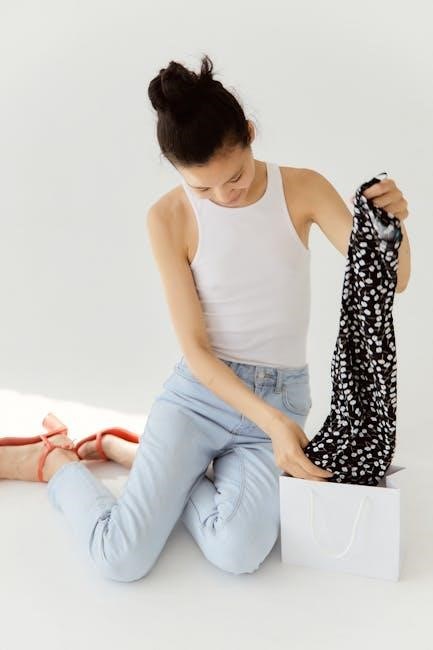
1.2 Who Can Benefit from One-Handed Dressing Techniques
One-handed dressing techniques are invaluable for individuals with limited mobility, such as those recovering from injuries or surgeries. People with stroke survivors, amputees, or arthritis also benefit greatly. These methods are particularly useful for anyone requiring adaptive strategies to maintain independence. They empower individuals to dress without assistance, fostering confidence and self-reliance. Additionally, caregivers and occupational therapists can gain insights to better support their clients or loved ones. These techniques are versatile, catering to various physical challenges, making them a practical solution for many seeking to overcome dressing difficulties and live more independently.
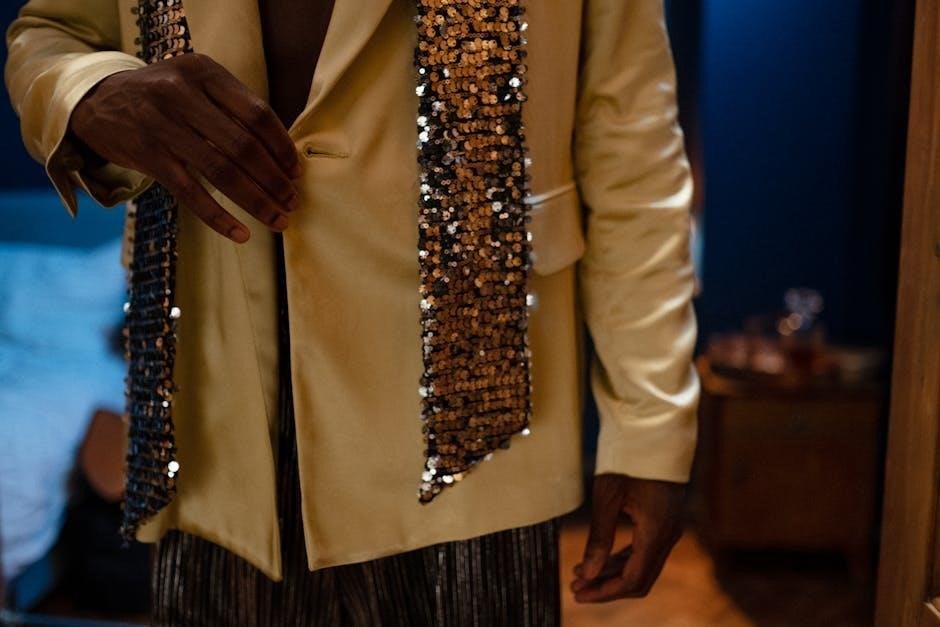
Pre-Dressing Tips for One-Handed Individuals
Organize clothing beforehand, choosing items with easy closures. Use a footstool for stability and plan dressing sequences to minimize challenges. These steps enhance efficiency and comfort.
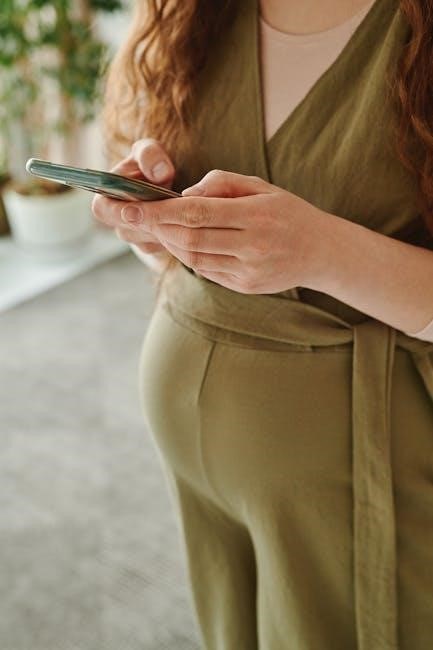
2.1 Preparing Clothing in Advance
Preparing clothing in advance simplifies the dressing process for one-handed individuals. Lay out outfits the night before, ensuring all pieces are within reach. Separate garments into manageable parts, such as placing shirts over pants to streamline the process. Consider pre-dressing accessories like socks or undergarments to save time. Smooth out wrinkles and remove tags to avoid obstacles. Organizing clothing this way reduces physical strain and mental stress, making mornings more efficient and less overwhelming. This step is crucial for maintaining independence and confidence in daily routines.
2.2 Choosing the Right Fabric and Design
Selecting the right fabric and design is essential for one-handed dressing. Opt for breathable, stretchy fabrics like cotton, bamboo, or elastic blends that allow ease of movement. Avoid heavy or stiff materials that may hinder flexibility. Choose clothing with magnetic or Velcro closures, which eliminate the need for buttons or zippers. Elastic waistbands and adjustable straps provide comfort and simplicity. Look for designs with minimal fastening requirements, such as pull-on pants or shirts with wide necklines. These features reduce strain and make dressing more manageable, promoting independence and confidence in daily routines.
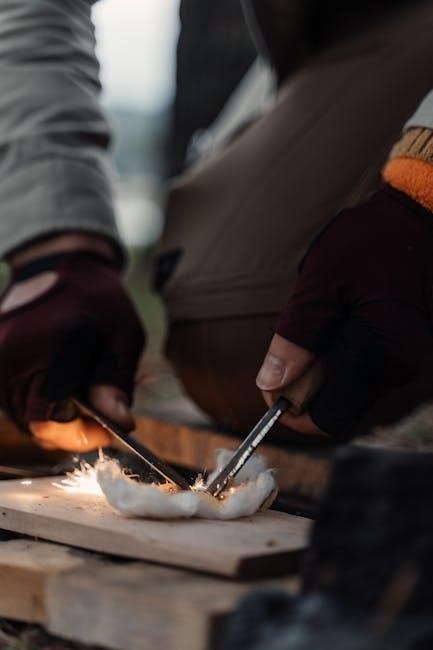
Upper Body Dressing Techniques
Mastering upper body dressing with one hand involves strategic methods. Start by dressing the affected arm first, using a pillow for support. Slide shirts over the unaffected side, then maneuver the affected arm in. Utilize adaptive clothing with magnetic closures to simplify fastening. Practice these techniques to build confidence and efficiency in daily dressing routines.
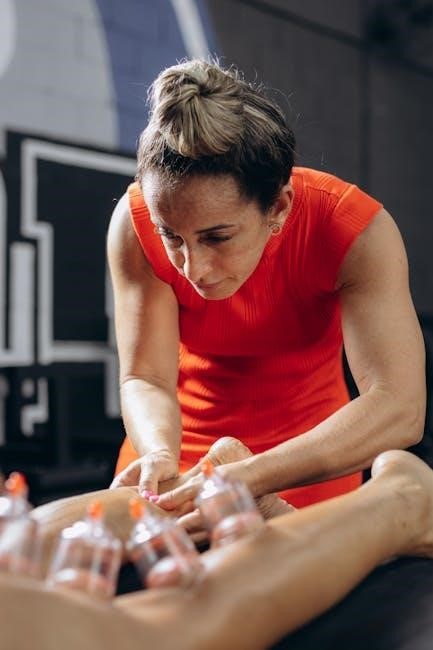
3.1 Dressing the Affected Arm First
Dressing the affected arm first is a foundational technique for one-handed dressing. This method minimizes strain and ensures the garment is properly positioned. Place the shirt or blouse face-down on your lap, with the neck opening at your knees. Slide your unaffected arm into the corresponding sleeve first. Then, carefully maneuver the affected arm into its sleeve using your available hand or by gently shifting your body. This approach prevents the garment from twisting and makes it easier to fasten. Regular practice enhances coordination and confidence, allowing individuals to dress independently with greater ease and efficiency over time.
3.2 Using a Pillow for Support
Utilizing a pillow for support is an effective strategy in one-handed dressing. Place a pillow on your lap to stabilize the affected arm, reducing strain and discomfort. This setup allows you to focus on dressing the unaffected side first. For shirts or blouses, rest the affected arm on the pillow, ensuring the garment is properly aligned. The pillow provides a secure base, making it easier to maneuver clothing without exerting unnecessary effort. This method is particularly beneficial for individuals with limited mobility, as it promotes balance and control during the dressing process, fostering independence and confidence in daily activities.
3.3 Step-by-Step Guide to Putting on a Shirt or Blouse
To put on a shirt or blouse with one hand, start by laying the garment face-down on your lap. Dress the affected arm first by sliding it into the sleeve. Use your unaffected arm to pull the shirt over your head, ensuring the neckline aligns correctly. Adjust the fabric with one hand, smoothing it over your shoulders. If needed, use your teeth to hold the shirt in place temporarily. Tuck the shirt into your pants or skirt using one-handed tucking techniques. This method ensures independence and ease, allowing you to dress efficiently while maintaining comfort and control throughout the process.
Lower Body Dressing Techniques
Mastering lower body dressing with one hand involves using adaptive tools like footstools and techniques for socks, pants, and skirts. These methods enhance independence and ease.
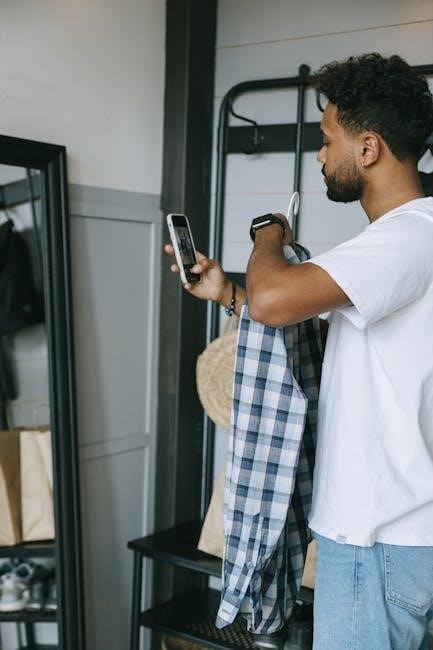
4.1 One-Handed Sock Donning Methods
One-handed sock donning can be simplified using specific techniques. Choose socks with light elastic for easier stretching. Prop your foot on a low stool, opposite leg, or chair for stability. Use your fingers to spread the sock open, then slide it over your toes. Gently pull the sock up while smoothing it with one hand. This method minimizes strain and ensures a secure fit. Adaptive tools, like sock aids, can also assist if needed. Practice this technique to build confidence and efficiency in lower body dressing. Consistency will help refine your skills, making the process quicker and more manageable over time.
4.2 Using a Footstool for Stability
A footstool is a valuable tool for enhancing stability during one-handed dressing. Place the stool at a comfortable height to support your foot while sitting. This allows you to maintain balance and focus on dressing without strain. When putting on socks or shoes, rest your foot on the stool and use your one hand to guide the clothing. The stool also provides a surface to lay out garments, keeping them within easy reach. By reducing physical strain, a footstool promotes independence and confidence. Regular use can make the process more efficient, ensuring a smoother dressing routine. This simple aid can significantly improve daily dressing tasks.
4.3 Putting on Pants or Skirts with One Hand
Putting on pants or skirts with one hand requires strategic techniques to maintain balance and control. Start by sitting comfortably and placing the garment on your lap or floor. Slide your stronger leg into the pant leg first, then carefully bring the fabric up. For skirts, hold the waistband with your one hand and step into it. Use your body weight to guide the garment upward. If needed, use your chin or the other arm for minor adjustments. Practice this method to build confidence and efficiency. Adaptive clothing with elastic waistbands can simplify the process, ensuring a smoother experience.
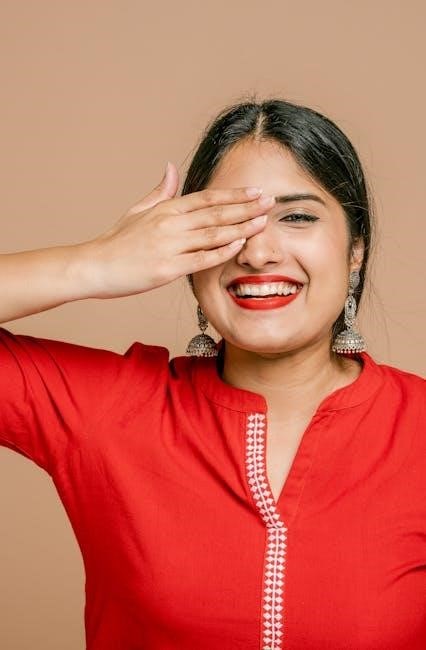
Adaptive Clothing for Easier Dressing
Adaptive clothing features, like magnetic closures and elastic waistbands, simplify dressing. These designs reduce the need for complex fastening, making one-handed dressing more accessible and efficient for everyone.
5.1 Magnetic and Velcro Closures
Magnetic and Velcro closures are game-changers for one-handed dressing, offering easy fastening without dexterity. These adaptive features eliminate the need for buttons or zippers, simplifying outfits like shirts, pants, and jackets. Clothing with magnetic clasps can be secured effortlessly, while Velcro provides a quick and adjustable solution. These closures are especially beneficial for individuals with limited hand function, reducing frustration and time spent on dressing. Many adaptive clothing brands now incorporate these options, making stylish and functional attire accessible. By choosing garments with magnetic or Velcro closures, individuals can achieve independence in their daily dressing routines with greater ease and confidence.
5.2 Elastic Waistbands and Stretchy Fabrics
Elastic waistbands and stretchy fabrics are ideal for one-handed dressing, eliminating the need for zippers or buttons. These materials allow garments to stretch easily, making them simple to pull on and adjust. Pants, skirts, and underwear with elastic waistbands can be slipped on without complex fastening, while stretchy fabrics like spandex or knits provide flexibility. This reduces the effort required for dressing, especially for individuals with limited dexterity. Additionally, stretchy clothing often fits snugly, minimizing adjustments needed after dressing. The comfort and ease of elastic waistbands and stretchy fabrics make them a practical choice for maintaining independence in daily dressing routines.
5.4 Tips for Choosing Adaptive Clothing
When selecting adaptive clothing, prioritize ease of use and comfort. Opt for garments with easy-open fasteners like magnetic or velcro closures. Lightweight, breathable fabrics are ideal for ease of movement. Consider clothes with adjustable features, such as drawstrings or elastic waistbands, to ensure a secure fit. Choose styles that align with your personal preferences to boost confidence. Additionally, look for seamless construction to avoid irritation. Consulting with an occupational therapist can provide personalized recommendations tailored to your needs. By focusing on functionality and comfort, adaptive clothing can significantly enhance independence in dressing, making the process both efficient and stress-free.
Additional Resources and Guides
Explore PDF guides, eBooks, and occupational therapy recommendations for one-handed dressing techniques. These resources offer step-by-step methods and adaptive solutions to enhance independence.
6.1 Recommended PDF Guides for One-Handed Dressing
Several PDF guides provide comprehensive instructions for one-handed dressing, offering step-by-step techniques and adaptive strategies; These resources are designed to enhance independence and simplify daily routines. They cover various aspects, from upper body dressing to lower body techniques, and include tips on choosing appropriate clothing. Many guides are created by occupational therapists, ensuring practical and effective methods. Additionally, some PDFs focus on specific challenges, such as sock donning or using assistive devices. These guides are valuable tools for individuals seeking to master one-handed dressing. They are easily accessible online, making them a convenient resource for anyone needing guidance.
6.2 Occupational Therapy Recommendations
Occupational therapists recommend tailored strategies to enhance one-handed dressing skills. They emphasize the use of adaptive tools and clothing modifications to simplify tasks. Techniques such as dressing the affected arm first and utilizing pillows for support are commonly suggested. Therapists also advocate for practice and patience, as mastering these methods takes time. Personalized plans are created to address individual needs, ensuring maximum independence. These recommendations align with the goal of making dressing safe, efficient, and confidence-building. By incorporating these strategies, individuals can achieve greater autonomy in their daily lives. Occupational therapy plays a crucial role in empowering those who need one-handed dressing techniques.
Mastering one-handed dressing techniques fosters independence and confidence. With practice and the right strategies, individuals can achieve self-sufficiency in daily tasks, enhancing overall quality of life.
7.1 Summary of Key Techniques
Mastering one-handed dressing involves essential strategies like dressing the affected arm first, using pillows for support, and adapting clothing with magnetic or Velcro closures. Techniques such as sliding socks onto the unaffected leg and utilizing footstools enhance stability. Practicing these methods consistently helps refine skills. Emphasizing independence, these approaches ensure confidence in daily tasks. By leveraging pre-dressing preparation and selecting suitable fabrics, individuals can navigate challenges seamlessly. These techniques, combined with patience, empower users to maintain autonomy in their daily lives effectively.
7.2 Encouragement for Practicing Independence
Practicing one-handed dressing techniques fosters confidence and self-reliance. Celebrate small achievements, as each step toward independence is a victory. Persistence is key; consistent practice strengthens skills and adaptability. Surround yourself with supportive resources, like caregivers or online communities, to stay motivated. Embrace the process, knowing that mastering these techniques enhances overall quality of life. Remember, independence is a journey, and every effort brings you closer to achieving it. Stay positive, and envision the freedom and confidence that come with dressing independently.